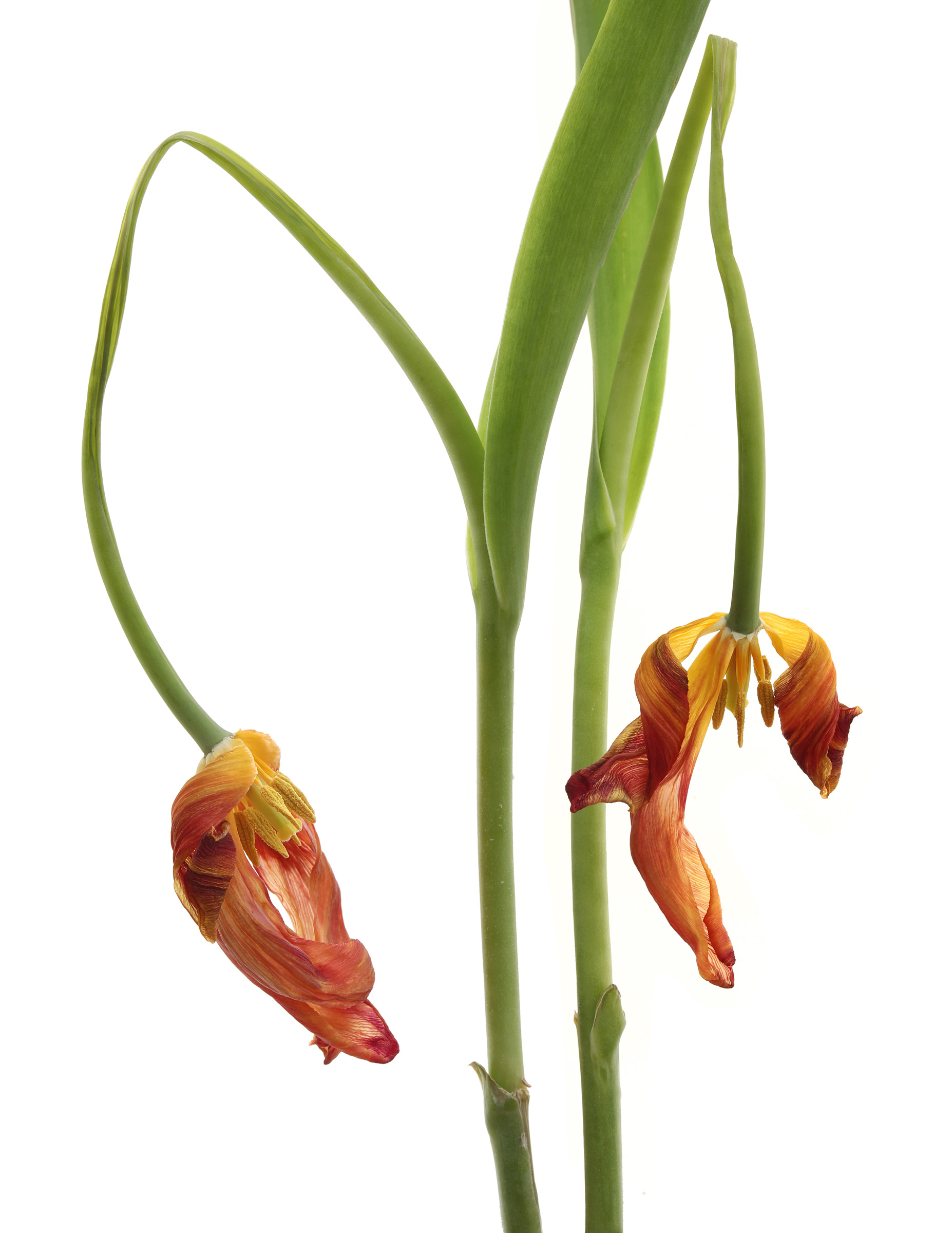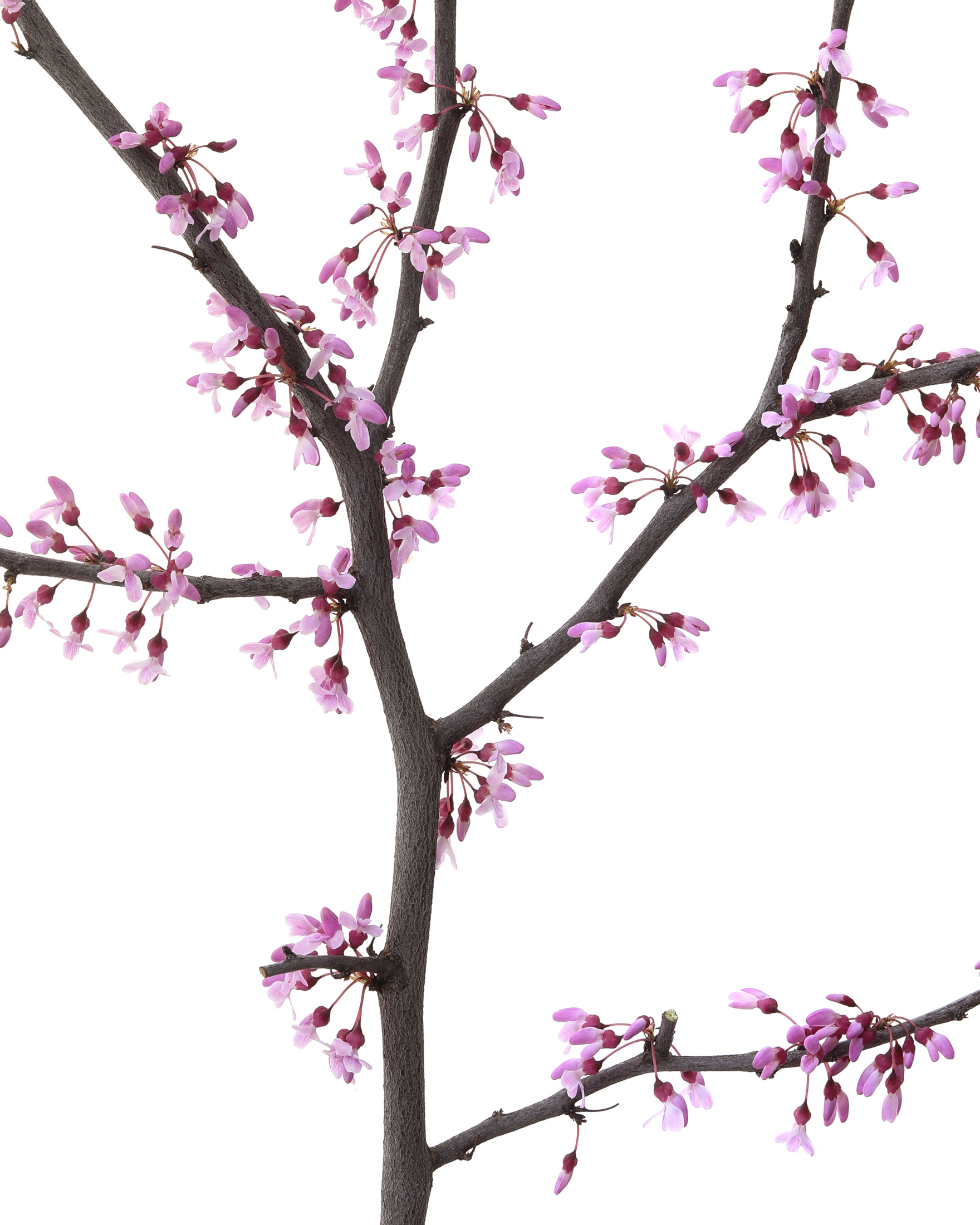
on looking past peak expression
When I give photo workshops, I have a section in my lecture that encourages participants to look past the peak expression of a subject. These tulips are a perfect example. I think these tulips are ever bit as interesting and beautiful, maybe even more so, than they were in peak bloom. Often the moments just before, or just after peak expression grab our curiosity more. They make us hesitate. The mind fills in the missing moment of perfection, it extrapolates the bursting bud or the decaying bloom. I personally find these wabi-sabi images so much more engaging. A fresh alternative to the clichéd image you have seen a million times.
spent tulips
Leave a Reply to Katherine Emmons Cancel reply

decorate the scaffolding
I love the trees that blossom in spring before the leaves burst and start competing; magnolias and redbud come to mind. While technically not native to Minnesota, redbuds are more and more common here as our climate changes. From a distance the profusion of pink flowers make it look like any number of spring flowering trees such as crabapples and plums. But on closer inspection, the way the blossoms seem to burst all along the length of the bare branches and even the trunk feels unique and special.
eastern redbud blossoms (Cercis canadensis)
-
Delicate, yet strong!
reply -
This photo is me, I am having my Wabisabi moment in life. I am not bent over however.
reply
Leave a Reply to Katherine Emmons Cancel reply

Jack is back!
Jack-in-the-pulpit is one of favorite woodland wildflowers. It even graces the back cover of my new book. The are shade-loving native woodland plans. We have hundreds of them that pop up in our wooded property every year. I have captured them in every phase: spring shoots, summer umbrellas, autumn seedheads, and winter stems. This is the first one to capture my attention this spring (I’ve been a little busy.Lol.)
jack-in-the-pulpit shoot in early spring (Arisaema triphyllum)
**For the nerds: The small, inconspicuous flowers of Jack-in-the-pulpit are borne on a fleshy, spike-like inflorescence called a spadix (“Jack“), which is enclosed (or nearly enclosed) by a large, sometimes colorful bract called a spathe (“pulpit“). The flowers are clustered around the base of the spadix inside the spathe. A sterile spadix appendix protrudes from the mouth of the spathe tube. The appendix is covered by the leafy tip of the spathe, referred to as the spathe hood (or spathe lamina). The lip along the mouth of the spathe tube, used as a landing platform for winged insects, is called the spathe flange.
Leave a Reply to Katherine Emmons Cancel reply

stubborn oak trees finally joining the party
These baby oak leaves overhanging my deck are stealing both my attention and my heart today.
young white oak leaves in spring
Leave a Reply to Katherine Emmons Cancel reply

lucky number 3
Three leaves (leaf-like bracts actually). Three petals. Three sepals. Three stigmas. Meet trillium. My husband’s favorite native flower.
trillium flower



This photo is me, I am having my Wabisabi moment in life. I am not bent over, however.